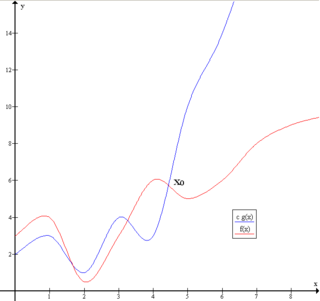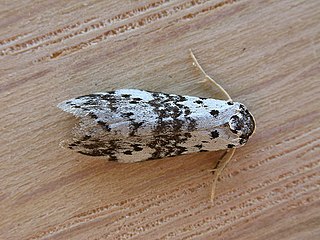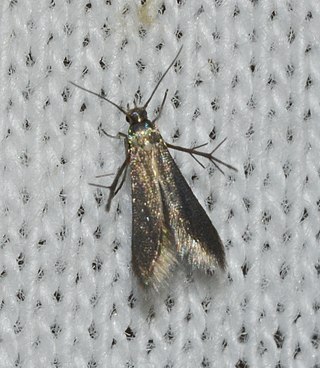In calculus, the chain rule is a formula that expresses the derivative of the composition of two differentiable functions f and g in terms of the derivatives of f and g. More precisely, if is the function such that for every x, then the chain rule is, in Lagrange's notation,

In mathematics, convolution is a mathematical operation on two functions that produces a third function. The term convolution refers to both the result function and to the process of computing it. It is defined as the integral of the product of the two functions after one is reflected about the y-axis and shifted. The integral is evaluated for all values of shift, producing the convolution function. The choice of which function is reflected and shifted before the integral does not change the integral result. Graphically, it expresses how the 'shape' of one function is modified by the other.

The lion is a large cat of the genus Panthera, native to Africa and India. It has a muscular, broad-chested body; a short, rounded head; round ears; and a hairy tuft at the end of its tail. It is sexually dimorphic; adult male lions are larger than females and have a prominent mane. It is a social species, forming groups called prides. A lion's pride consists of a few adult males, related females, and cubs. Groups of female lions usually hunt together, preying mostly on large ungulates. The lion is an apex and keystone predator; although some lions scavenge when opportunities occur and have been known to hunt humans, lions typically do not actively seek out and prey on humans.

Big O notation is a mathematical notation that describes the limiting behavior of a function when the argument tends towards a particular value or infinity. Big O is a member of a family of notations invented by German mathematicians Paul Bachmann, Edmund Landau, and others, collectively called Bachmann–Landau notation or asymptotic notation. The letter O was chosen by Bachmann to stand for Ordnung, meaning the order of approximation.

In physics, engineering and mathematics, the Fourier transform (FT) is an integral transform that takes as input a function and outputs another function that describes the extent to which various frequencies are present in the original function. The output of the transform is a complex-valued function of frequency. The term Fourier transform refers to both this complex-valued function and the mathematical operation. When a distinction needs to be made the Fourier transform is sometimes called the frequency domain representation of the original function. The Fourier transform is analogous to decomposing the sound of a musical chord into the intensities of its constituent pitches.

In thermodynamics, the Gibbs free energy is a thermodynamic potential that can be used to calculate the maximum amount of work, other than pressure-volume work, that may be performed by a thermodynamically closed system at constant temperature and pressure. It also provides a necessary condition for processes such as chemical reactions that may occur under these conditions. The Gibbs free energy is expressed as
This gallery of sovereign state flags shows the national or state flags of sovereign states that appear on the list of sovereign states. For flags of other entities, please see gallery of flags of dependent territories. Each flag is depicted as if the flagpole is positioned on the left of the flag, except for those of Iran, Iraq and Saudi Arabia which are depicted with the hoist to the right.
Mester de juglaría is a Spanish literature genre from the 12th and 13th centuries, transmitted orally by "juglares" who made their living by reciting and singing these stories for the recreations of nobles, rulers, and the general public. These were people of humble origins, traveling comedians who also engaged in circus acts like juggling, tightrope walking, and acrobatics, or acted as clowns who told jokes or played simple instruments, or danced and sang versions of simple mime or puppet pieces, or, importantly, recited verses composed by other authors, called troubadours, either in public places, or in castles of feudal lords for whom they were housed; much of the time they also supported themselves by the visual arts.

Schreckensteinioidea is a superfamily in the insect order Lepidoptera containing a single family, Schreckensteiniidae, or "bristle-legged moths", because of the stout spines on the hindlegs. The superfamily and family were both described by Thomas Bainbrigge Fletcher in 1929. The relationships of this family within the group apoditrysia are currently uncertain. One of the species, the blackberry skeletoniser, is widespread and common across Europe and has been introduced as a biological control to Hawaii, whilst three species of Corsocasis occur in South East Asia.

Schreckensteinia is a moth in the family Schreckensteiniidae.

Thallarcha is a genus of moths in the subfamily Arctiinae.
Actia jocularis is an eastern Palearctic species of fly in the family Tachinidae.

Actia is a genus of large flies in the family Tachinidae.

Schreckensteinia festaliella, the blackberry skeletonizer, is a moth of the family Schreckensteiniidae first described by Jacob Hübner in 1819. It is found in the Palearctic including Europe and has been introduced to North America

Schreckensteinia erythriella is a moth of the family Schreckensteiniidae. It is found in north-eastern North America, including and possibly limited to Illinois.
Schreckensteinia felicella is a moth of the family Schreckensteiniidae. It is found in western North America, including and possibly limited to California.
Thallarcha jocularis is a moth of the subfamily Arctiinae first described by Rudolph Rosenstock in 1885. It is found in the Australian states of New South Wales and Victoria.
Several moth species are known as skeletonizers, including:

Cratichneumon is a genus of the parasitic wasp family Ichneumonidae.
Schreckensteinia inferiorella is a moth in the family Schreckensteiniidae. It was described by Philipp Christoph Zeller in 1877.









